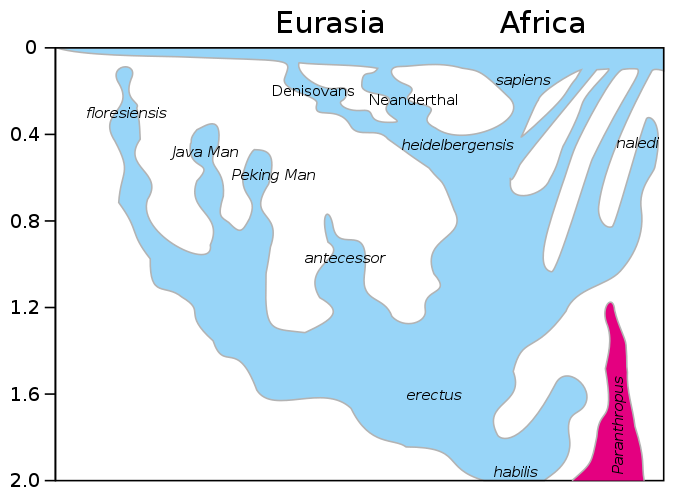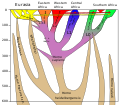File:Homo lineage 2017update.svg
外观

此SVG文件的PNG预览的大小:675 × 498像素。 其他分辨率:320 × 236像素 | 640 × 472像素 | 1,024 × 755像素 | 1,280 × 944像素 | 2,560 × 1,889像素。
原始文件 (SVG文件,尺寸为675 × 498像素,文件大小:21 KB)
文件历史
点击某个日期/时间查看对应时刻的文件。
| 日期/时间 | 缩略图 | 大小 | 用户 | 备注 | |
|---|---|---|---|---|---|
| 当前 | 2017年12月20日 (三) 11:02 |  | 675 × 498(21 KB) | Dbachmann | |
| 2017年12月20日 (三) 09:27 |  | 675 × 498(20 KB) | Dbachmann | ||
| 2017年12月20日 (三) 08:54 |  | 675 × 498(19 KB) | Dbachmann | {{Information |Description= |Source= |Date= |Author= |Permission= |other_versions= }} | |
| 2017年12月19日 (二) 10:44 |  | 561 × 465(16 KB) | Dbachmann | User created page with UploadWizard |
文件用途
没有页面使用本文件。
全域文件用途
以下其他wiki使用此文件:
- af.wikipedia.org上的用途
- cs.wikipedia.org上的用途
- en.wikipedia.org上的用途
- es.wikipedia.org上的用途
- eu.wikipedia.org上的用途
- fa.wikipedia.org上的用途
- id.wikipedia.org上的用途
- ja.wikipedia.org上的用途
- pl.wikibooks.org上的用途
- pt.wikipedia.org上的用途
- ro.wikipedia.org上的用途
- ru.wikipedia.org上的用途
- te.wikipedia.org上的用途
- uk.wikipedia.org上的用途
- vi.wikipedia.org上的用途
- zh-yue.wikipedia.org上的用途






